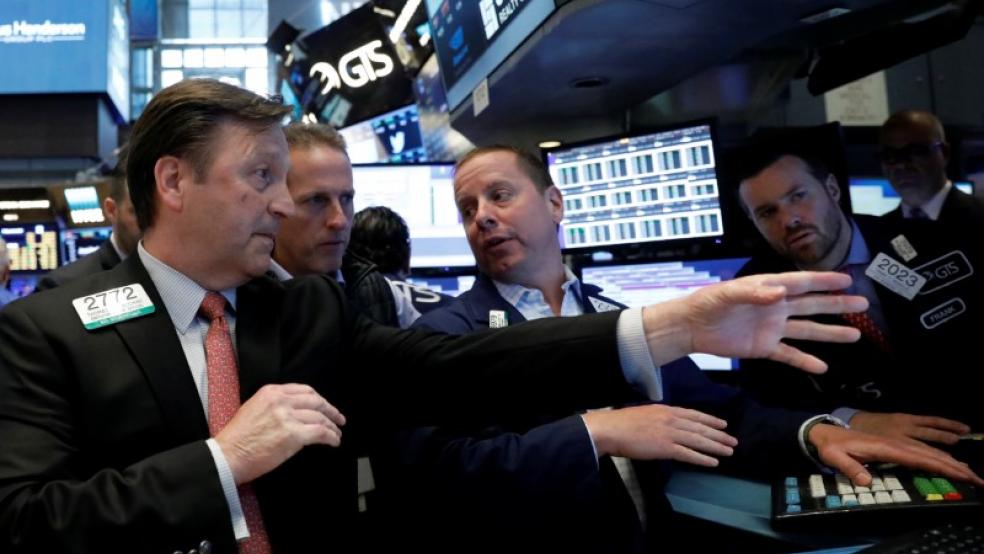(Reuters) - Try to hide wherever you like but periods of rising interest rates mean lower returns.
The Federal Reserve raised rates for the first time in more than nine years in December, and seeing as short rates are at 0.50 to 0.75 percent, investors may be facing an extended and potentially steep trip to higher levels. U.S. inflation is now at 2.5 percent, the highest since 2012, and hawkish testimony before lawmakers by Fed Chair Janet Yellen has prompted traders to now see a 42 percent chance of a March hike, up from just 30 percent Monday.For many investors, especially those in their twenties or thirties, this may well be their first time trying to maximize returns during a tightening cycle.A new study, looking at more than a century of easing and tightening cycles, makes somewhat grim reading, pointing to the likelihood that inflation-adjusted returns will be lower as the Fed takes rates higher.“It is hard to identify assets that perform well in absolute terms during hiking cycles, although we do detect relative outperformance at such times from defensive versus cyclical stocks and from large-cap versus small-cap stocks,” Elroy Dimson, Paul Marsh and Mike Staunton of the London Business School write in a study carried out as part of Credit Suisse’s annual study of global investment returns. (http://publications.credit-suisse.com/tasks/render/file/index.cfm?fileid...)In inflation-adjusted terms all major financial assets and all principal real assets, like farmland and precious metals, perform less well when rates are rising than when they are falling.“While some sectors and asset classes are less sensitive than others to tightening cycles, interest rate rises are accompanied by lower risk premia, inferior industry returns, smaller rewards from many factor-investing strategies, and reduced price appreciation for a wide variety of real assets,” the authors write.To measure returns in a way in which an investor who doesn’t know the future path of rates could mimic the study uses a simple strategy. It compares returns of an imaginary investor who buys on the day after an initial hike and stays invested so long as rates stay the same or continue to rise, with one who buys on the first cut and stays in until rates rise.GETTING REALIn inflation-adjusted, or real terms, U.S. equity investors have made 6.2 percent annualized since 1913. When rates were falling that annualized return is 9.3 percent but when they are rising it falls to 2.3 percent.For U.S. bonds, real returns over the period were 2.2 percent, with a 3.6 percent return when rates were falling and just a 0.3 percent return when they are rising.The reasons are straightforward. Higher rates make the future stream of cash a share represents less valuable in net present terms. As for bonds the capital value gets hit as current market rates rise compared to the coupon on an older bond, while inflation, the underlying cause behind tightening, eats away at the value of the yield.And while those higher returns during periods of falling interest rates come with higher volatility - some 25 percent higher for U.S. stocks - returns are still better on a risk-adjusted basis. U.S. equities have a Sharpe ratio - a standard risk-adjusted return measure - almost four times higher during falling rate periods than when they are rising. Real assets also do worse when rates are rising despite often being thought of as a shelter from inflation. The study looked at 11 real assets, from violins to real estate to wine, and found that every one did better during periods of easing. Silver, for example, returns 8.9 percent more annualized in the two years following rate falls compared to the two years after rate rises. For art the difference was 3.2 percent annualized.Within equities the study did find the expected difference among sectors, with those thought to be cyclical offering a return levered to economic growth, differing sharply from those which are defensive and have more stable growth. For example, looking at returns since 1926 shows that healthcare stocks, a classic defensive sector, have outperformed the broad index by 4.5 percent annualized during rising rate periods but have lagged slightly when rates are falling. Retail, a cyclical sector, outperforms the index by 3 percent annualized during periods of falling rates but lags by 2.1 percent when rates rise.To be sure, diversification still has benefits during periods of rising rates, as it allows investors to take on more risk than they otherwise would. It isn’t however, a magic bullet which allows you to avoid the lower returns which tightening cycles bring.History, as they say, could be different this time as rates rise, but investors ought not to bet on it.Returns will be lower and we should all plan accordingly. (Editing by James Dalgleish)Of rising rates and falling returns: James Saft

Shannon Stapleton



